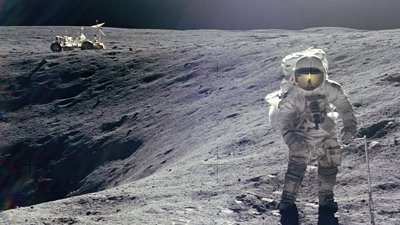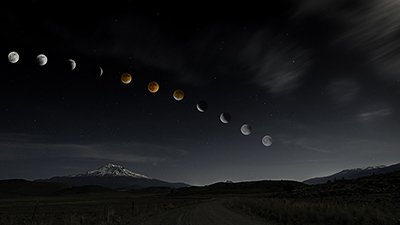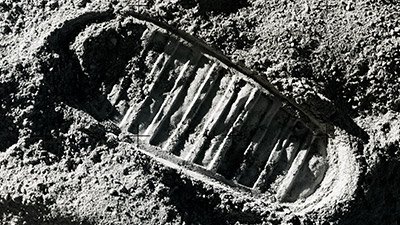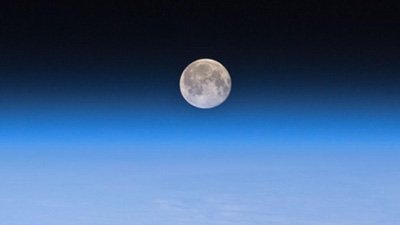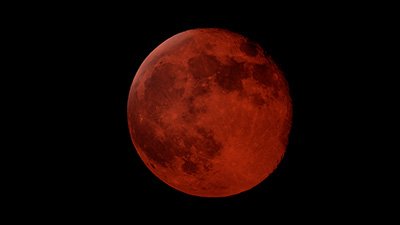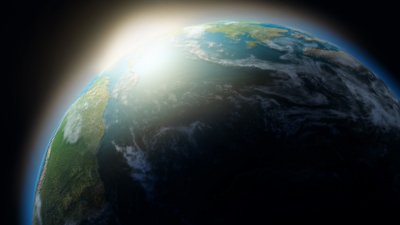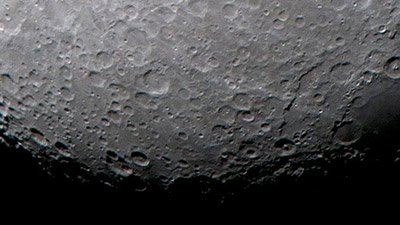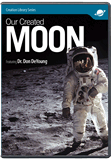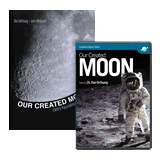Moon
Lunar Origin Theories
Fifty years ago three theories competed to explain the moon’s origin. Settling this dispute was a major reason for the Apollo program. Lunar rocks brought back by the Apollo astronauts appeared to rule out all three theories. In the post-Apollo world, scientists developed the giant impact hypothesis as a sort of hybrid of the three older models.
Meteors Hit the Moon
Sometime in its past, the earth’s moon was pounded with thousands upon thousands of meteors. Perhaps an asteoroid bombardment helped initiate the Flood, and the stream of destructive meteroids pelted the moon at the same time, as they flew through the solar system.
The Moon—A Perfect Partner
The greatest problem that Newton tackled was the reason the moon orbited the earth each month. In solving that problem, Newton developed his theory of gravity. If the earth didn’t have the moon, Newton might never have reached his amazing insight into the fundamental laws of God’s creation.
News About Moon
-
July 19, 2021 from Ken Ham Blog
A recent study has been making headlines around the world, warning of “record flooding” to a predictable and naturally occurring “wobble” in the moon’s orbit.
-
March 5, 2018 from Ken Ham Blog
It seems that every other month there’s another article about a new moon-formation hypothesis. This month’s is that “the moon may have formed in a vaporised, doughnut-shaped Earth.”
Articles About Moon
-
Sept. 21, 2025 from Answers Magazine
Each moon’s spectacular features point to the workmanship of God.
-
July 20, 2025 from Countering the Culture
Many people remember watching on TV the remarkable events of July 20, 1969, when Neil Armstrong and Buzz Aldrin walked on the moon. Or did they?
-
Oct. 1, 2024 from Answers Magazine
The creation account and other Old Testament passages use yom for day with words like evening and morning, indicating days have been around 24 hours since the beginning.
-
June 18, 2022 from Answers Magazine
Sights like a lunar eclipse are possible only because of our moon’s unique relationship to the earth.
-
Nov. 14, 2021 from Answers Magazine
Every year, the moon moves an inch or so farther away from earth. It may not seem like much, but that tiny movement puts a big limit on the moon’s age.
-
In-Depth ArticleSimulating the Age of the MoonMay 1, 2014 from Answers in Depth
The mystery of the moon’s age is supposedly solved by computer simulations.
-
Jan. 1, 2014 from Answers Magazine
Our moon isn’t just a pretty dot in the night sky—it helps make life possible.
-
July 17, 2013 from Answers Magazine
Sometime in its past, the earth’s moon was pounded with thousands upon thousands of meteors. Is it possible to reconstruct the sequence of these strikes?
-
Comeback of Giant Impact HypothesisNov. 3, 2012 from News to Know
“Giant impact hypothesis” makes a comeback.
-
June 5, 2012 from Answers Magazine
The rocks that Apollo astronauts brought back from the moon helped to demolish pet evolutionary ideas about the moon’s origin.
-
Our Scarred MoonFeb. 25, 2012 from News to Know
Moon story stretches to accommodate unexpectedly recent activity.
-
Magazine ArticleExcerpt from Our Created Moon by Don DeYoungDec. 13, 2011
Read Chapter 5 from Don DeYoung’s book, Our Created Moon.
-
Moon and Earth Originally One Body?July 10, 2010
Was the moon formed separately from the earth, or were the two originally one body?
-
Book ChapterBy the Light of the MoonJune 28, 2010 from Demolishing Supposed Bible Contradictions: Volume 1
Does Genesis 1:15 say that the moon emits its own light as some skeptics claim?
-
June 6, 2010 from Answers Magazine
Why does God say the moon gives light when it only reflects light?
-
A Blue Moon?Nov. 21, 2009 from News to Know
Kapow! That’s one small plume for man, one amazing new discovery for mankind.
-
Feedback ArticleLunar RecessionAug. 11, 2006 from Feedback
We have had many people contact us concerning the recession rate of the moon. Hopefully this short article will help to clarify the details of lunar recession and why it supports a young universe.
-
God—‘Lost’ in Space!July 1, 2004 from Answers Update
The secular media would scoff if such a reading from Genesis occurred from space.
-
Semi-Technical Research PaperProblems for 'Giant Impact' Origin of MoonApril 1, 2000, pp. 6–7
Evolutionary astronomers have great trouble accounting for the origin of the moon. There have generally been three competing hypotheses, but they all have serious physical problems.
-
Technical Research PaperA Biblically-Based Cratering TheoryApril 1, 1999, pp. 100–104
The cratering patterns observed on the moon were formed during two distinct impacting episodes.
-
Technical Research PaperMoon Dust and the Age of the Solar SystemApril 1, 1993, pp. 2–42
One of the evidences for a young earth that creationists have been using now for more than two decades is the so-called “dust on the moon” problem.
-
Magazine ArticleIs the Moon Really Old?Sept. 1, 1992, pp. 43–44
Because the presence of the moon over any part of the earth does not cause an immediate bulging response, this slight delay results in a continuous, slight, forward 'pull' on the moon.
-
Magazine ArticleMoon Quiz WinnerNov. 1, 1980, pp. 19–20
Congratulations to Alex Williams in the Environmental Science Division of the Australian Atomic Energy Commission.
-
Magazine ArticleCan You Prove How Young the Moon Is?May 1, 1980, pp. 15–16
When rocks were brought back from the moon a substance called neptunium was discovered to be present in them.
Recommended Resources

Answers in Genesis is an apologetics ministry, dedicated to helping Christians defend their faith and proclaim the good news of Jesus Christ.
- Customer Service 800.778.3390
- Available Monday–Friday | 9 AM–5 PM ET
- © 2026 Answers in Genesis





